|
Fillmore Historical Museum: That’s Entertainment!
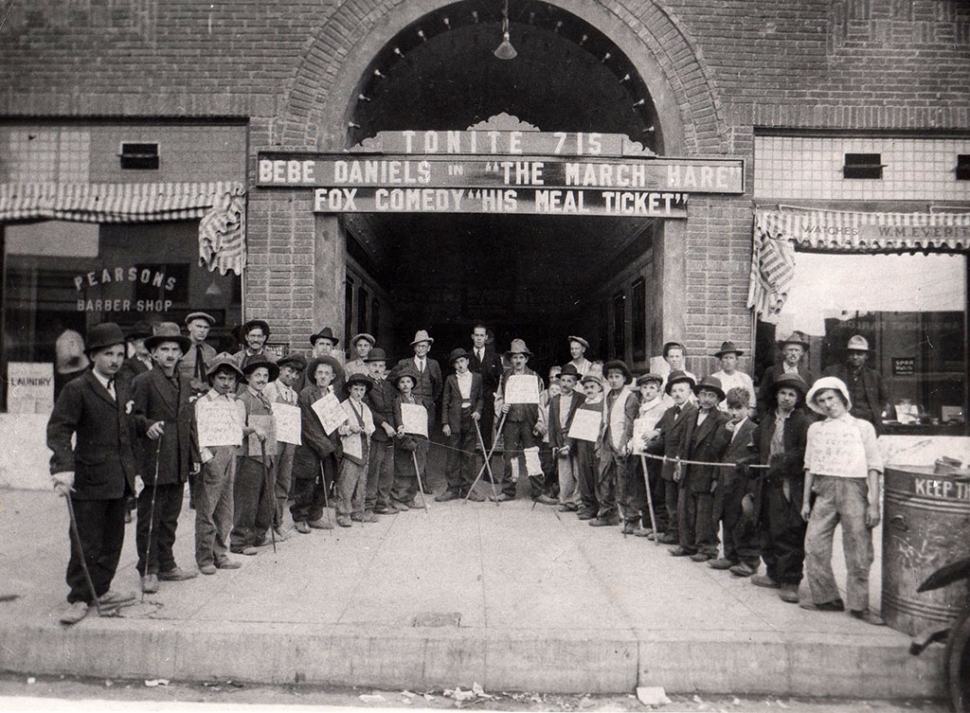 Chaplin contest in 1919. By Anonymous — Wednesday, August 12th, 2020
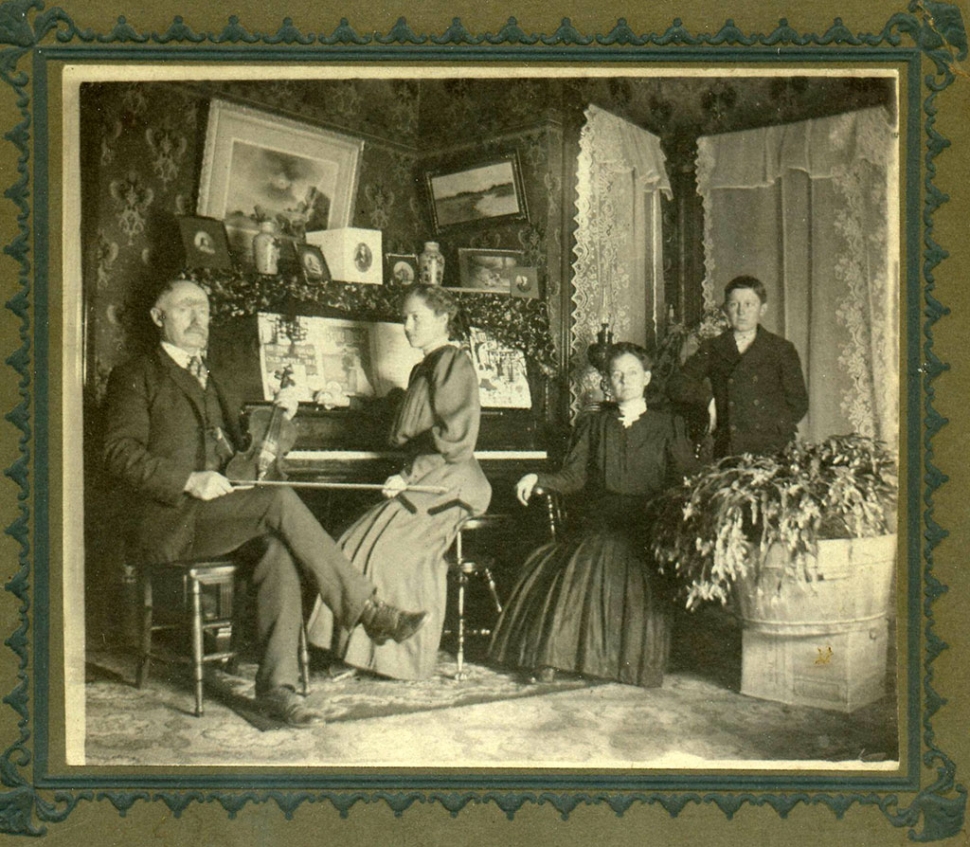 Home Entertainment circa 1909. 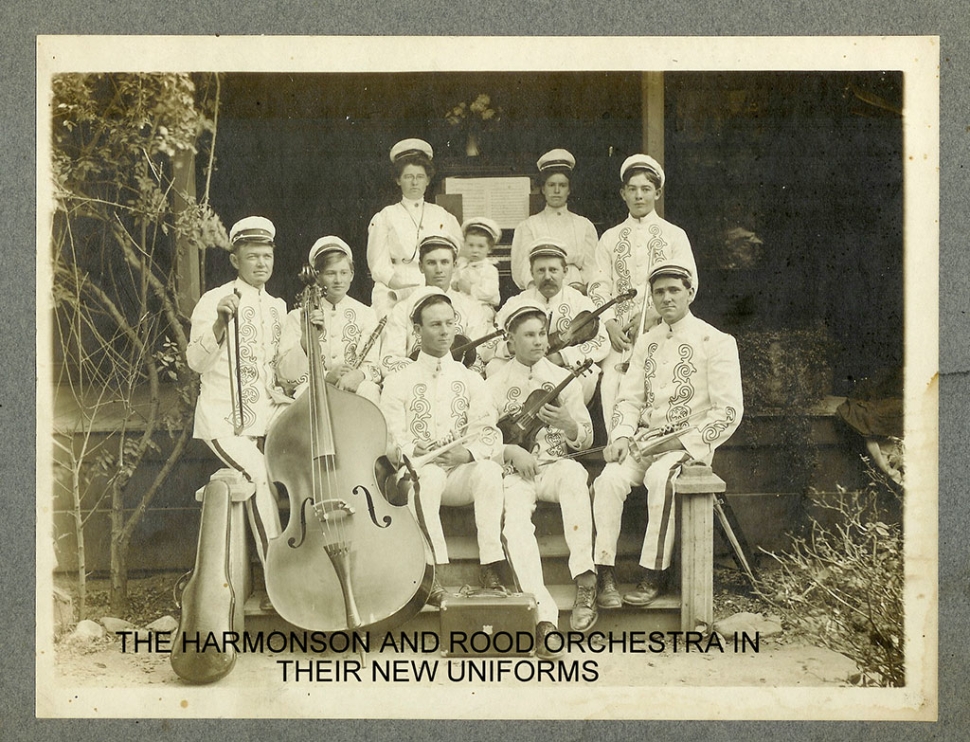 Harmonson and Rood Orchestra. 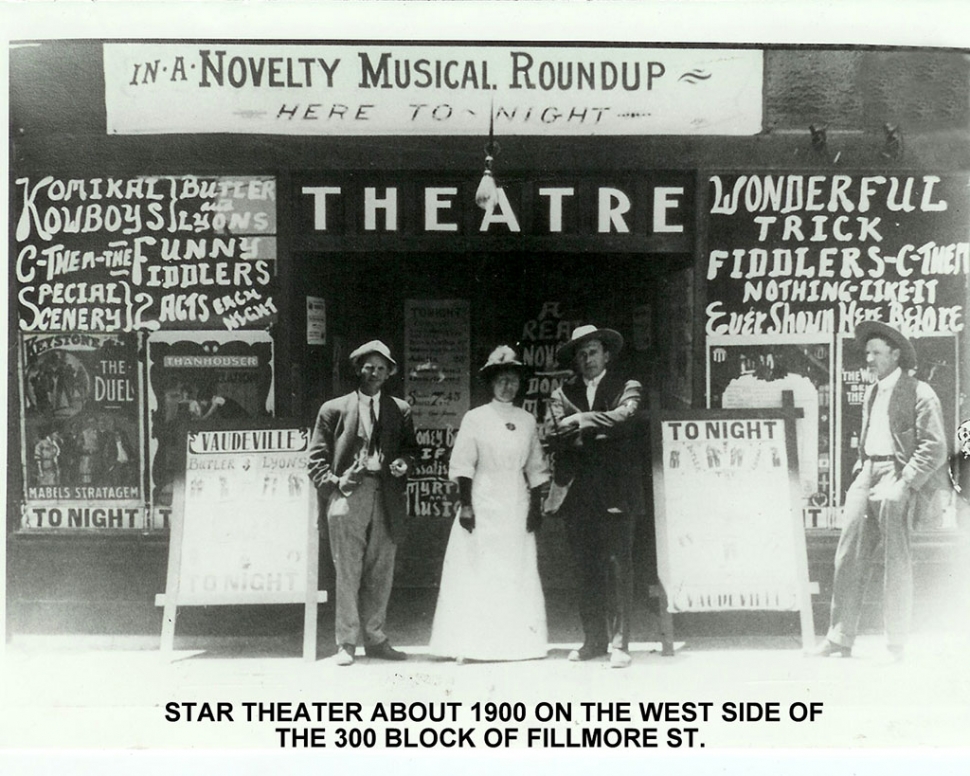 Star Theatre. 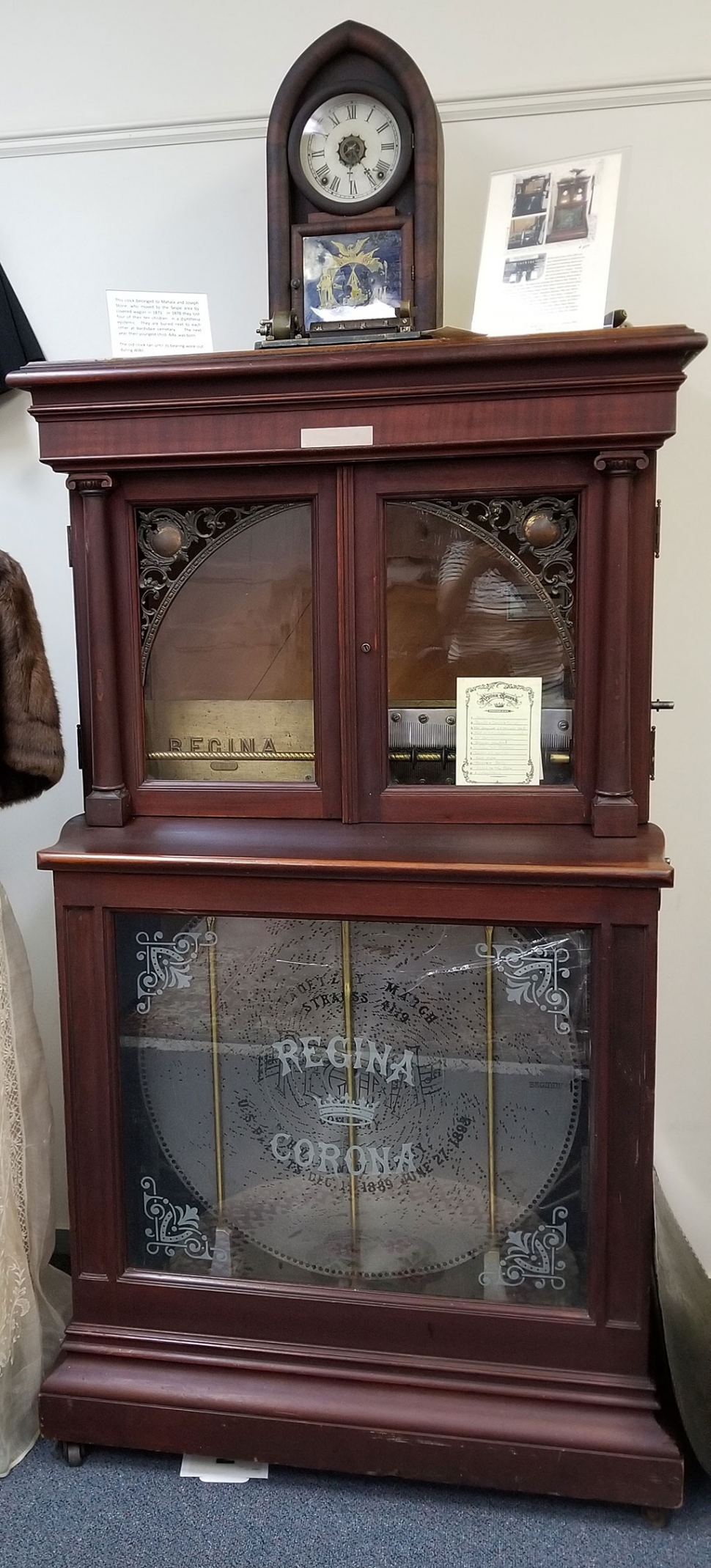 Wilmer Akers Music Box. Courtesy of Fillmore Historical Museum Did you ever wonder why so many of the old photos showed mom, dad and a couple of children in their simple living room gathered around the piano, daughter playing the piano, dad playing a violin and the rest singing or just enjoying the music? In those days entertainment was a do it yourself project. Playing the piano was almost a required skill. There was no TV, no radio. Fillmore didn’t even have electricity until 1907 when electric lights came to Central Ave. and were installed between Richard Stephens’ store on the southwest corner and Harmonson and Rood store on the south east corner of Central. So, in the evening families and friends gathered around the piano and entertained themselves. The violin or fiddle as it was often called was also popular. It was transportable. Having a party? Invite someone who could play the fiddle and dancing ensued. Taking a long trip such as a wagon train west, don’t forget the fiddle. One of the earliest entertainment venues here was the Bardsdale Social Hall on Ventura St. just north of the Methodist church in Bardsdale south of the Santa Clara River. Saturday nights in 1893 found the oil crews down from the hills and ready to party. There was a small band, the Harmonson and Rood band, and, of course, dancing. It went very well for a time until the local minister up the street decided to have a visiting preacher for a revival meeting. When the preacher, a woman, found out that that wonderful band that entertained in her revival meeting had the night before entertained the partiers down the street she put up such a fuss that the local minister never again could have that band play for church. Too bad because the band was good and had played for free. In 1894 Richard Stephens repurposed a packinghouse north of a vacant lot on Central Ave. and Main St. for a theater which he called naturally, “Stephens Hall”. Stephens used packing boxes left from the packinghouse for seats and built a 3 foot stage in one corner. A variety of traveling shows performed in the Hall. These included minstrel shows, a traveling hypnotist, Pavilla Comedy Company and, for the teenagers of the time, social dances by printed invitations to “Yourself and Your Lady”. He eventually built a store on the lot south of the theater. Today it is the location of La Estrella market. You can still see his name in the tiles at the front entrance of the store on Main St. The theater is long gone but can be seen in old photos of Central Ave. The first real theater built in town was the Star Theater. It was built by Wilmer Akers in about 1900 in the 300 block of Fillmore St. It was a vaudeville house and silent movie palace. In 1902 Akers purchased a giant music box which played a 27” disc. That music box is still playing and can be heard at the Fillmore Historical Museum. By the teens, Fillmore was awash in entertainment not all of it welcomed. The Fillmore Herald in September, 1913, noted that The California Carnival Company was headed for town. They had visited Fillmore twice before and had apparently found the locals “easy pickins”. The sheriff and the city fathers called the carnival “loathsome” and they were told in no uncertain terms to find some other place to go. They were advertising something called “Barbary Coast Attractions.” One can only imagine! According to an early story by museum founder, Edith Jarrett, Medicine Shows often set up for business on Main St. near Central Ave. One in 1909 displayed pickled tapeworms, roundworms, and unidentifiable pieces of anatomy making the audience queasily in need of his medication. The barker, dressed in a gaudy velvet vest, sold pain killers and a variety of cure-alls. The “doctor” entertained by playing a banjo, tossing out silver dollars and when the audience was completely taken in by the show, began to curetoothaches or other pains by using a little of his magic medicine. By the time he was finished he had sold out of wares, mostly laudanum in a syrup, and was ready to quickly move on to another town. There was also less formal entertainment. Fishing, hiking, swimming and hunting were popular. There were two “pool halls”. Church activities kept bored youngsters from getting into trouble. Although with all the work kids did in those days on the farm, being bored was not generally a childhood problem. In 1911, Merton Barnes came to Fillmore and leased the new Brinley building on the North West end of Central and Sespe. His “Empire” theater had a sloping floor and a screen. He hand lettered glass plates for a fee for local businesses and showed them on the screen using a “magic lantern”. (Advertising obviously has been around since the beginning of entertainment.)Vaudeville was the popular entertainment of the day with comedy, singing and dancing acts. But Barnes also showed the latest craze, motion pictures. The serial, “The Perils of Pauline” was shown in 1914. He also booked William S. Hart movies. (Many of you may remember the theater in the 1940s and 50s, known then as The Palm Theater.) Barnes moved across the street in 1917 when he built the Barnes Theater on a lot which had been the location of Leon Hammond’s home. The theater had 500 seats and was state of the art with a stage door at the back for scenery, a trapdoor in the stage floor,and an orchestra pit. In addition to silent movies, it was used for musical recitals and vaudeville road shows. One of the major events at the theater in 1919 was a Charlie Chaplin lookalike contest. Boys dressed up like Charlie Chaplin complete with moustaches, hats and canes. Gerald “Sadie” Davis won the contest and received $1.00 Ingersoll watch. Today the theater is vacant waiting for some creative individual to find a new use for it. So the next time you are bored and in need of entertainment, look beyond the internet, cable or TV and remember how for most of history people entertained themselves and had a wonderful time doing it. |
